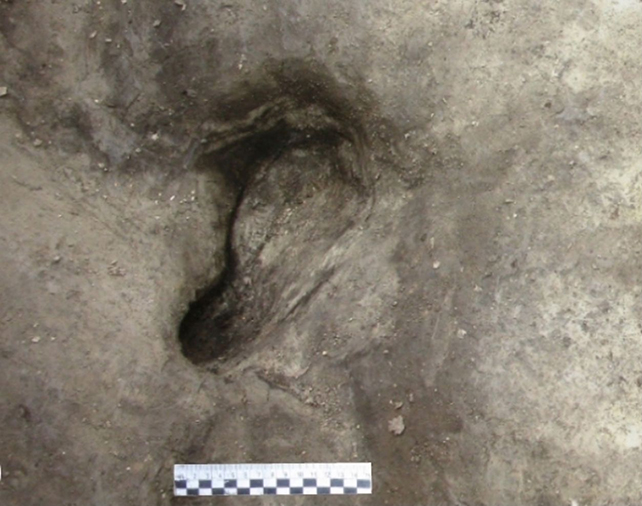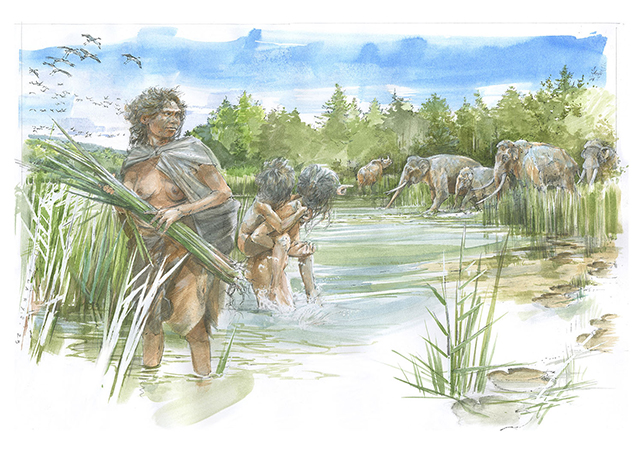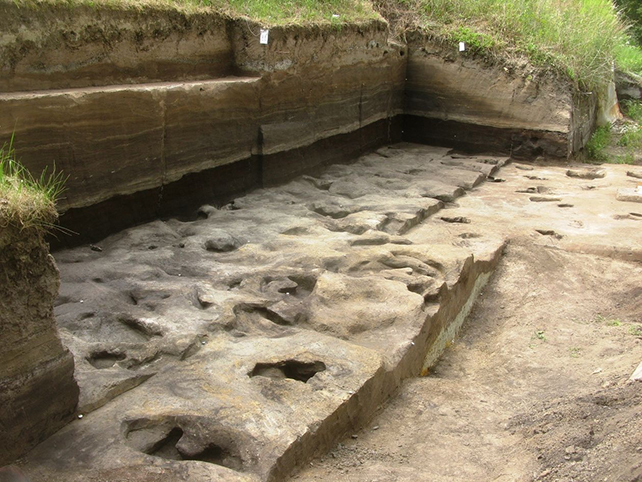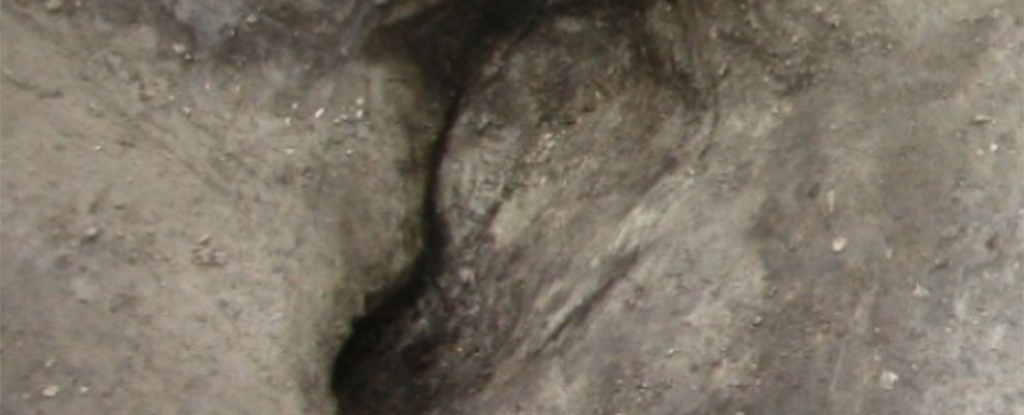Products You May Like
Researchers have discovered the earliest examples of human footprints in Germany. They’re so old, it’s unlikely they were made by any species live today.
Stretching back some 300,000 years through time, it’s thought they were made not by Homo sapiens, but by the ancient (and now extinct) ‘Heidelberg people’ (or Homo heidelbergensis).
The impressions provide researchers with a fascinating glimpse into the way early humans lived, discovered alongside animal footprints in the Schöningen Paleolithic site in Lower Saxony, located in northwest Germany.
We know that H. heidelbergensis were capable hunters, and their ancestry stretches back even further than the Neanderthals. In fact, they’re considered to be the last common ancestors of Neanderthals and us.

“For the first time, we conducted a detailed investigation of the fossil footprints from two sites in Schöningen,” says archaeologist Flavio Altamura, from the University of Tübingen in Germany.
“These tracks, together with information from sedimentological, archaeological, paleontological, and paleobotanical analyses, provide us with insights into the paleoenvironment and the mammals that once lived in this area.”
Based on their study, looking at everything from the layers of sediment to the bones preserved at the site, the researchers think this was once a lake surrounded by a lush landscape made up of birch trees, pine trees, and grasses.

Only three H. heidelbergensis footprints have been identified, which doesn’t give researchers much to work with. However, using comparisons with observations provided in other studies, the team estimates that they were left by one adult and two juvenile youngsters.
We’re most likely looking at a family outing, the study suggests. In the surrounding environment there was also plenty of evidence that the lake was frequented by elephants, rhinoceroses, and even-toed ungulates, which all used the water for washing or drinking.
“Depending on the season, plants, fruits, leaves, shoots, and mushrooms were available around the lake,” says Altamura. “Our findings confirm that the extinct human species dwelled on lake or river shores with shallow water. This is also known from other Lower and Middle Pleistocene sites with hominin footprints.”

An usually large number of well-preserved wooden tools have previously been found trampled into the sediment at the site too, offering additional insight into how these ancient human ancestors operated. It’s difficult to be sure what the tools were used for 300,000 years later, but they may have been for hunting, harvesting, or constructing.
The site also has evidence of the extinct elephant species Palaeoloxodon antiquus: these animals could reach up to 4.2 meters (14 feet) in height, and weigh up to 13 tons. A rhino footprint, the first of its kind to be found in Europe, was also identified.
It’s a real treasure trove of findings from an area that is already well known for its preservation of ancient human history. It also shows the potential of ichnology, the study of traces left behind – from human footprints to animal burrows.
“Ichnology is emerging as a powerful tool for reconstructing a high resolution environmental, ecological and archeological picture of prehistoric sites, especially when included in a multi-disciplinary approach,” write the researchers in their published paper.
The research has been published in Quaternary Science Reviews.
